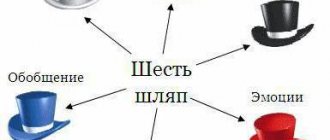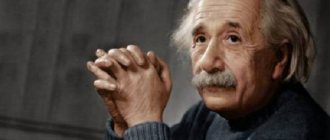It is worth noting right away that it is a mistake to use the words “communication” and “communication” as synonyms. Communication (according to Ozhegov’s explanatory dictionary) is mutual relations, business or friendly relations. This is an Old Church Slavonic word that has long been part of the Russian literary language.
“Communication” comes from the Latin word “communicare”. It means not only “to communicate”, but also “to do something in common; share something; act together, together." Both terms are united by the word “general,” and by this general is meant the subject of conversation. What's the difference?
Definition
Communication is interpersonal interaction that involves the exchange of emotionally significant messages. It does not have a clear structure and is often aimless. The interlocutors share with each other feelings, impressions, and interesting information. In other words, communication is triggered by emotions. Manipulating the interlocutor during communication depends on the type of personality, mood and is done mostly unconsciously.
Communication is a purely informational process. This is an exchange of information between individuals in which the message is conveyed purposefully. At the same time, manipulation is used meaningfully. Unlike communication, it must have a conscious goal for at least one of the participants (attracting the interlocutor to his position, encouraging him to take the necessary action, or simply increasing the information fund). Communications include business correspondence, negotiations, reports, seminars, press conferences, discussions. Emotions are not so typical for this process.
Goals of the communication process between people
For each subject of communication, it is important to achieve 3 main goals:
- cognitive - the communicator conveys, and the recipient receives new information and knowledge;
- incentive - the communicator pushes the interlocutor, and he, in turn, receives motivation, an incentive to act;
- expressive - the communicator shows emotions, conveys sensations, experiences, feelings, and the recipient accepts them.
Communication functions
- Information and communication – exchange of information.
- The interactive function of communication is associated with the development of rules for the interaction of people, the clear organization of their joint activities to achieve their goals.
- Cognitive – mastering new information to apply it in practical activities.
- Axiological – evaluation of an object or process from the point of view of usefulness (value) for an individual or society as a whole.
- Normative – transfer and consolidation of norms in everyday consciousness.
- Psychotherapeutic – establishing human relationships. It is known that man is a social being, therefore, without communication with other individuals, association inevitably occurs, subsequently leading to severe mental disorders. It is known that the most terrible punishment is solitary confinement, in which the prisoner soon goes crazy.
- Social-practical – exchange of results of activities, abilities, skills.
Communication is not just communication...
The roots of the basic concept go back to the Latin word “communication”, which appeared thanks to another word – “communicare”. The first means “ communication, connection ,” and the second means “to communicate, connect, make common.”
The general meaning, it would seem, is clear, but this initial meaning inevitably changed over the course of time and the development of social interaction. It has changed and acquired a slightly different color, which served as the basis for additional interpretations.
So, in particular, based on the definition of “communicare” (to report, connect), communication implies the process of transmitting messages and other signals, and in the modern understanding - the transfer of information or the exchange of knowledge and information between objects of any nature (both natural and artificial) .
On the other hand, there is the etymology of “communication”, which goes back to the concepts of community and association, which occupy a special place in the system of socio-philosophical theories and humanitarian discourses (how is that?). In this perspective, associations, societies and communities are seen either as a goal or as a condition for successful communication.
As for philosophy, issues of communication become particularly relevant only at the beginning of the 20th century. This “belated, but subsequent” reaction of society to this topic is explained by the sharp aggravation of social problems and the need to solve them. And it is precisely during this period that the meaning of the term in question is concretized.
The bottom line is that we get a simple and understandable thesis:
communication is a constructive process of interaction between people or their groups for the purpose of transmitting information or exchanging information.
This definition most accurately reflects the essence of communication and is considered official, however, taking into account different angles, there are other formulations, of which only two are the most common.
In the first, communication is interpreted as the main mechanism that allows creating social connections and improving social culture, and in the second - as the laws of interpersonal interaction that govern people’s relationships.
Communication model
According to the traditional communication model, the following sequence of elements is distinguished:
- The source of information (addressee) is a person who has a specific goal of communication, an idea.
- Coding is the process of translating thoughts into a sign system (words, facial expressions, gestures) that can be transmitted.
- Communication channels are means of transmitting information. These are technical means: telephone, Internet or the environment (air, light, water).
- Decoding is the decoding process in which the recipient (addressee) gives the encoded information real meaning.
- Recipient (addressee) – the one to whom the information was intended.
- Feedback is what the recipient feels in response to the information received.
- Feedback is that part of the response that the recipient conveys to the sender with words, actions, symbols, and emotions. At the same time, communication roles change.
One more element is highlighted separately – noise. These are the external factors that distort the transmitted data, violate their integrity and the ability to be perceived by the recipient. Noise also includes communication barriers, that is, psychological obstacles that interfere with the adequate perception of transmitted information.
Communication
Communication is a type of active interaction between objects of any nature, involving information exchange. In the structure of any communication, there are five main functional components arranged in a linear sequence:- source of information (addressee) generating a message for transmission;
- a transmitter that converts a message into signals transmitted over a certain communication channel;
- link;
- an information receiver that decodes signals and translates them into a message;
- the recipient of information (addressee) to whom the message is intended.
In accordance with this model, the source of information (addressee) encodes some information using the sign means of the sign system that is used in this form of communication. To assimilate information, the addressee requires the reverse procedure of presenting the content—decoding. In addition to the main components, this model, as a rule, contains a dysfunction factor that can distort the meaning of the transmitted message - the so-called noise (for example, external interference, the presence of several signals in the communication channel, and so on), as well as a factor for preventing communication failures - redundancy information (repetition of message elements). Thus, this model of a communication act implies an adequate transfer of information from the addresser to the addressee. The structure of the holistic communication process is represented by many individual sequential communication acts.
This general model of communication was first proposed by C. E. Shannon and W. Weaver in 1949 and covers various information devices, ranging from technical means to animals and people. The Shannon-Weaver model represents an elementary type of communication and therefore has a number of limitations: it is strictly mechanistic and is based on the possibility of directly obtaining information; abstracts from the content and meaning of the information being transmitted, paying attention only to its quantity; the communication process in this model is linear, unidirectional in nature, in which feedback is absent or not considered. The formal nature of communication represented by this model is studied in the mathematical theory of communication and information transfer (also called communication theory), in cybernetics and systems theory, as well as in linguistics and analytical philosophy (see Analytical philosophy), where the syntactic-semantic and partly intentional nature of it is emphasized. aspect, thereby expanding the perspective of information theory.
The original meaning of the term “communication” has changed somewhat over time and is now interpreted very broadly. On the one hand, based on the meaning of the Latin verb “communicare” (to connect, report), the concept of communication implies the transmission of signals and messages, that is, [in the modern sense] the exchange of information between any objects of natural or artificial nature. On the other hand, the concept of communication is etymologically closely related to such concepts as community and association. This connection acquires special significance in the system of humanitarian discourses, and, above all, for socially oriented philosophical theories (see Philosophy), in which society (see Society) or community is considered as a condition or goal of successful communication. Therefore, the term “communication,” along with its general scientific meaning (as information exchange between any objects), contains a wide range of sociocultural meanings associated with the specifics of information exchange in society (as information exchange between people). When analyzing and describing communication in the system of humanitarian discourses, the following are distinguished:
- communication in a broad sense - as one of the foundations of human life and diverse forms of speech and language activity, and not necessarily implying the presence of a content-semantic plan;
- communication as information exchange in technologically organized systems;
- mental communication as an intellectual process that has a consistent ideal content plan and is associated with certain situations of social action;
- existential communication as an act of discovering the Self in the Other; in this capacity, communication acts as the basis of an existential relationship between people (as a relationship between I and You) and a decisive process for a person’s self-determination in the world/society, in which a person gains an understanding of his existence and its foundations.
In schemes and models that take into account the characteristics of social communication, that is, communication between people, the main attention is paid to activities related to the meaningful analysis of information, to the intentions that the source, on the one hand, and the recipient of information, on the other, strive to realize. It is the content of information, its intentionality, or direction, that constitute the most important prerequisites for the mutual exchange of information, thanks to which mutual understanding and interaction between people in the communication process is achieved. From a social point of view, communication is a special area of human activity (see Activity), which arose and is being developed by society for the purpose of mutual exchange of information, mutual understanding and coordinated action in various areas of practical life and knowledge. Necessary conditions and structural components of social communication are the presence of mechanisms for the perception and understanding of information by the subjects of communication, channels for transmitting information, as well as rules for carrying out communication (semiotic, ethical). For these purposes, various sign systems have been historically developed in each culture, and first of all language in the form of oral and then written speech. In a broad sense, every social action can be considered as communication, as containing and expressing certain information. However, actual communication are only actions carried out with a special purpose of communication, that is, having a motivational basis, orientation towards the transfer of information and carried out using a sign system adequate to this purpose.
Social communication is one of the basic mechanisms of the sociocultural process, providing the very possibility of forming social connections, managing the joint life activity of people and regulating its individual areas, accumulating and transmitting social experience. At the same time, the main function of communication in society is to achieve social community and activity coherence while maintaining the individuality of each of its elements.
The structure of the simplest social communication includes at least:
- two or more communicant participants endowed with consciousness and mastering the norms of a certain semiotic system (language);
- the situation (or situations) that they seek to comprehend and understand;
- texts that express the meaning of the situation in the language or elements of a given semiotic system;
- motives and goals that make texts directional, that is, what prompts subjects to address each other;
- the process of material transmission of texts.
The main content unit of social communication is a message (monoaspect information about something) or text (complex information about many or several significant aspects of something). Thus, messages, texts, actions to construct them and, conversely, actions to reconstruct their content and meaning, as well as the thinking and understanding associated with this, constitute the content of social communication. Moreover, such communication is a phenomenon of a systemic order with a pronounced hierarchical structure of the means of communication: semanteme, message, text, a specialized cultural-semantic subsystem (for example, a branch of knowledge or activity in its information aspect), a local cultural-semantic system (for example, ethnic culture , national language), global semantic system (for example, artificial language) and others. Based on the type of relationship between the participants-communicators, interpersonal, public and mass communications are distinguished. Based on the type of semiotic means used, speech, paralinguistic and material-sign communications are distinguished.
Issues related to social communication have traditionally been raised and developed primarily within the framework of philosophical understanding of the problems of dialogue and communication, as well as research in the field of the origin of social norms, morality, law and the state (social contract theory). The philosophical doctrine of communication has historically developed in opposition to the doctrine of the social contract, which dates back to the Enlightenment. Proponents of the theory of social communication (K. Jaspers, O. Bolnov, E. Mounier) emphasize that a social contract is fundamentally a contract, a transaction whose participants are limited by mutual obligations: they perceive and understand each other only in the light of these obligations, that is abstract, impersonal. The concept of contract implies a connection based on the actual separation of people. Communication is considered as a consciously established interdependence, the opposite of a contract, that is, “Contact instead of a contract” (F. Kaufman). A means of establishing social communication is a discussion, during which people become convinced that they are separated by generally accepted norms of thinking and are united by that in which they are different and individually unique. The concept of communication becomes philosophically significant, first of all, in the existential philosophy of K. Jaspers, who, developing the motives of S. Kierkegaard, distinguishes between the basic “communication of here-being” and the higher “existential communication”. According to Jaspers, even successful “communication of here-being,” extending from the communication of vital interests down to the universal elements of ideas, remains a lower level of communication than “existential communication” between individuals. In general, communication becomes the goal and task of philosophy for Jaspers, and the measure of communication becomes a criterion for evaluating and choosing a particular philosophical system.
The topic of social communication, intersubjectivity and dialogue is becoming one of the main ones in the philosophy of the 20th century. The theoretical factor that largely determined the nature of modern communication research was the turn of philosophical and scientific reflection towards the reality of language. Studies of linguistic and sign structures that have developed since the beginning of the 20th century in the works of philosophers and logicians (B. Russell, L. Wittgenstein, R. Carnap, A. Church and others), linguists (F. Saussure, C. Peirce and others) and semioticians (C. Morris and others) radically changed the understanding of communication and approaches to its study and organization. So, for example, L. Wittgenstein begins to consider communication as a complex of language games that have their own semantic-pragmatic rules and their own fundamental limitations. If earlier language was relied upon simply as a means of communication, now communication itself is immersed in the structures of language, becoming the space in which certain linguistic forms unfold. This turn opened up horizons for an artificial-technical approach to the organization of communication. Due to the widespread construction of linguistic and semiotic means, communication began to become artificial, acquiring various technically organized forms (mass communication, human-machine communication and other forms). Another factor determining the significance of the topic of communication was criticism and a radical rethinking of the foundations of philosophy itself, unfolding throughout the 20th century. In the search for new foundations, it is the categories “communication” and “language” that philosophers begin to consider as one of the basic and central ones.
The first definitions of social communication insisted, to a greater or lesser extent, on mechanisms that favor the development of social relations, in particular, on mechanisms for the transmission of content and the phenomena of symbolization. Historically, the first [cybernetic] model of communication, developed by the founder of cybernetics N. Wiener, is based on the mathematical theory of information, according to which information received through an open system reduces the degree of uncertainty, entropy, which irreversibly increases in a closed system, which leads to increased disorder and, ultimately, to a loss of control over the functioning of the system. Cybernetics, thus, declared its claims to a new ideology - the ideology of an “open society”, the stability of which would be supported by the free circulation of information, equally accessible to all its members. Despite all its utopianism, this ideology was enthusiastically accepted by intellectuals of the 1950s, and subsequently transformed into the phenomenon of “communication” thinking, the most important requirement of which, along with tolerance and a willingness to compromise, is the “transparency” of information flows.
In phenomenology (E. Husserl, M. Merleau-Ponty, B. Waldenaels, A. Schütz, P. Berger, T. Luckmann and others), which develops the ideas of intersubjectivity and the life world, it is emphasized that traditional dialogics, dating back to Plato, widespread even in the times of J. G. Herder and W. von Humboldt in the concept of “message” and permeating the rational everyday life of a person, it assumes participation as a matter of course as a whole. But the universal, expressed in a message, necessarily leads to the existence of someone who would speak on its behalf, which entails logocentrism. Thus, the commonality in the dialogue deprives the other participant in the dialogue of any opportunity to object and forces him ultimately to remain silent. According to B. Waldenfels, E. Husserl made the first attempt to think about intersubjectivity without relying on a pre-established communication mind. In his analysis of phenomenological experience, Husserl proposes to proceed not from shared experience, but from the experience of the Alien, although at the same time he still tries to prove that the Alien is constructed on the basis of the Own. To solve this issue, phenomenology offers two methodological approaches: eidetic and transcendental reduction. In eidetic reduction, the Alien is included in the architectonics of “essential structures”, rising above the Own and the Alien. The Alien as Alien remains outside the brackets, therefore, communication with it turns out to be impossible. Transcendental reduction includes reduction into a certain “semantic horizon” extending from the Own to the Alien, which ultimately silences the latter. Waldenfels finds it possible to combine the positions of phenomenology (M. Merleau-Ponty) and ethnomethodology (C. Levi-Strauss), and proves that communication between the Own and the Other is feasible on the territory of intercultural experience, not mediated by some all-encompassing third, where the Own is constantly trusted by the Other, and the Other - Own. It is necessary to accept the Alien as something to which we respond and inevitably must respond, that is, as a demand, challenge, urge, call, claim, and so on: “Every looking and listening would be a responding looking and listening, every speech or action would be responsive behavior."
The dialogical nature of communication and its mediation by sociality was already considered by M. M. Bakhtin. According to the latter, any statement is a response, a reaction to any previous one and, in turn, presupposes a speech or non-speech reaction to oneself. Bakhtin O. Similar considerations were developed by L. S. Vygotsky: “The primary function of speech is communication. Speech is first and foremost a means of social communication, a means of expression and understanding.” Sign material retains its communication function even in cases where it is used only as a means for constructing logical structures. Signs retain communication potential even when they organize the consciousness of the subject, without going beyond its boundaries and performing an explicative function. Such internal self-organization of consciousness, according to Vygotsky, occurs as a result of the internalization of external sign processes, which, going deep into the subject, take the form of his “inner speech,” which forms the basis of verbal thinking. Together with sign communication, the dialogue of other reflective subjects penetrates into the consciousness of the subject, which contributes to the birth of his reflection.
A wide field of philosophical theories of communication is formed by the transcendental pragmatics of K.-O. Apel, as well as the theory of communication action of J. Habermas; they represent the two main lines of discourse ethics. K.-O. Apel points to the concept of an a priori thinking communication community of all arguers as a condition for the possibility of successful communication. J. Habermas continued the line of J. Mead and E. Durkheim, whose approaches replaced the paradigm of goal-directed activity, dictated by the context of the philosophy of consciousness, with the paradigm of communicative action.
Habermas understands communication action as a process in which it is a matter of clarifying normative claims to truth, authenticity and veracity that can be claimed by speakers through their utterances and verified only in the mutual exchange of arguments. Habermas's concept of “communicative action” opens up access to three interrelated thematic complexes:
- the concept of communication rationality, opposing the cognitive-instrumental narrowing of the mind;
- a two-stage concept of society that links the lifeworld and system paradigms;
- the theory of modernity, which explains today's social pathologies by pointing out that communication-structured spheres of life are subject to the imperatives of now independent, formally organized systems of action.
Rational, according to Habermas, can be called, first of all, people who have knowledge, and symbolic expressions, linguistic and non-linguistic communication and non-communicative actions that embody some kind of knowledge. Knowledge has a propositional structure, that is, certain opinions can be presented in the form of statements. Communication practice against the backdrop of a particular lifeworld is oriented towards achieving, maintaining and renewing consensus, which rests on the intersubjective recognition of claims that can be criticized.
All concepts of action used in social scientific theories can be reduced to four main ones:
- the concept of "theological action", which implies that the actor achieves his goal by choosing means that promise success and applying them properly;
- the concept of “norm-governed action”;
- the concept of “dramatic action”, which correlates with the participants in the interaction, forming for each other an audience before which they perform;
- the concept of “communication action”, which correlates with the interaction of at least two speaking, capable subjects who enter (with the help of verbal or extraverbal means) into an interpersonal relationship.
In these models of action, language takes on special significance. At the same time, Habermas believes, it is advisable to use only those analytical theories of meaning that focus on the structure of speech expression, and not on the intentions of the speaker. According to Habermas, society must be understood both as a system and as a lifeworld. A concept based on such an approach must be a theory of social evolution that takes into account the differences between the rationalization of the lifeworld and the process of increasing complexity of social systems. The life world appears as a horizon within which the communicative actors are always located. This horizon is generally limited and modified by structural changes in society.
Habermas notes that the program of capitalist modernization, implemented through the means of the theory of communication action, is critical of both modern social sciences and the social reality that they are designed to comprehend. The critical attitude towards the reality of developed societies is due to the fact that they do not fully use the learning potential that they have culturally, and also because these societies demonstrate an “uncontrolled increase in complexity.” The increasing complexity of the system, acting as a kind of natural force, not only destroys traditional forms of life, but also invades the communication infrastructure of life worlds that have already undergone significant rationalization. The theory of modernity must certainly take into account the fact that in modern societies the “space of chance” for interactions freed from normative contexts is increasing. The originality of communication action becomes a practical truth. At the same time, the imperatives of the subsystems that have become independent penetrate the life world and, through the paths of monitoring and bureaucratization, force communication action to adapt to formally organized spheres of action even when a mechanism for coordinating action through mutual understanding is functionally necessary.
In non-classical philosophy, communication is viewed in terms of progress towards a fundamentally unknown result. According to J. Derrida, the systemic set of conditions for communication includes writing, which he calls arch-writing. Archwriting is immanent in misunderstanding and distortion; it does not exist to manifest existing ideas. Therefore, there cannot be communication that is completely pure and successful, without distorting the perception of truth, just as there cannot be truth without lies and delusion. Derrida's search is directed towards the root sensory foundations of the sign, its texture, its archinatural spontaneous source. The classical definition of a sign through the opposition signified/signified is the fruit of the centered geometric model of the sign of the era of rationalism, in which the first member of the opposition is always considered as more significant and valuable. Derrida proceeds from the fundamental absence of the signified, transcendental to language, and denies the identity between thinking and being. Writing is an endless interaction of chains, signifiers, traces that replace the missing signified. In this case, the signs certainly do not have a direct and fixed correspondence with the designated objectivity, do not have the status of presence and act independently in the absence of the author’s consciousness. Derrida emphasizes that communication does not address the consciousness of the author as the source of meanings; rather, it generates these meanings in his mind and the author himself is constructed in the process of writing. Writing frees speech from the narrowness of the signal function through the written imprinting of speech in graphics and on the surface, whose essential characteristic is to be infinitely transferable. At the same time, writing opens up access to communication with the Other, because this approach to writing allows one to discover in it marginal meanings that were previously suppressed. This opens up additional channels of communication with the past.
According to J. Deleuze, communication occurs at the level of events and outside of forced causality. In this case, there is rather a concatenation of non-causal correspondences, forming a system of echoes, repetitions and resonances, a system of signs. Events are not concepts, and the inconsistency attributed to them (inherent in concepts) is the result of their incompatibility. The first theorist of illogical incompatibilities, Deleuze believes, was G. W. Leibniz, for what he called compossible and incompossible cannot be reduced only to identical and contradictory. Compossibility does not even presuppose the presence of predicates in the individual subject or monad. Events are primary in relation to predicates. Two events are compossible if the series formed around the singularities of these events extend in all directions from one to the other; and are incompossible if the series diverge in the vicinity of the singularities that define them. Convergence and divergence are entirely primordial relations, covering a rich area of illogical compatibility and incompatibility. Leibniz uses the rule of incompossibility to exclude one event from another. But this is unfair when we consider pure events and the ideal game, where divergence and disjunction are asserted as such. We are talking about an operation according to which two things or two determinations are affirmed due to their difference. Here there is a certain positive distance between different elements, which binds them together precisely by virtue of difference (just as differences with the enemy do not deny me, but affirm me, allowing me to be collected before him). Now incompossibility is a means of communication. In this case, the disjunction does not turn into a simple conjunction. Deleuze names three different types of synthesis:
- connective synthesis (if..., then...) - accompanying the construction of a single series;
- conjunctive synthesis(s) - a method of constructing convergent series;
- disjunctive synthesis (or) - distributing divergent series.
Disjunction truly becomes a synthesis when the divergence and decentering given by the disjunction become objects of affirmation as such. Instead of excluding some predicates of a thing for the sake of the identity of its concept, each thing opens up to meet infinite predicates through which it passes, losing its center - that is, its self-identity as a concept or Self. The exclusion of predicates is replaced by the communication of events. Deleuze proposes to distinguish between two ways of losing personal identity, two ways of developing contradiction. In the depths, opposites communicate precisely on the basis of infinite identity, while the identity of each of them is violated and disintegrates. On the surface, where only infinite events are located, each of them communicates with the other due to the positive nature of their distance and the affirmative nature of disjunction. Everything happens through the resonance of incommensurabilities - point of view with point of view; shifting perspectives; differentiation of differences - and not through the identity of opposites.
This understanding of the “machine” of communication, oriented towards the creation of something new from outside, is opposed by the concept of coordination of practices by P. Bourdieu’s habitus. It implies a strictly limiting generative ability, the limits of which are set by historical and social conditions that cut off the creation of an unpredictable new one. The theory of practice puts forward the thesis, firstly, that objects of knowledge are not passively reflected, but are constructed, and, secondly, the principles of such construction are a system of structured and structuring predispositions or habitus, which is built in practice and is always focused on practical functions . The environment associated with a certain class of conditions of existence produces habituses, that is, systems of other acquired predispositions that act as principles that generate and organize practices and ideas that are objectively adapted to achieve certain results, but do not imply a conscious focus on these results.
Developing Leibniz's logic of mutual influence of events, Bourdieu understands habitus as an immanent law that is a prerequisite not only for the coordination of practices, but also for coordination practices. Amendments and regulations, which are consciously introduced by the agents themselves, presuppose ownership of a common code. Attempts to mobilize a collective, according to practice theory, cannot succeed without a minimum match between the habitus of the mobilizing agents (prophets, leaders, etc.) and the predispositions of those who recognize themselves in their practices or speeches, and, above all, without the group formation that arises as a result of spontaneous matching of predispositions. It is necessary to take into account the objective correspondence established between predispositions that are coordinated objectively, since they are ordered by more or less identical objective necessities. To determine the relationship between group habitus and individual habitus (which is inseparable from the individual organism and is socially determined and recognized by them, legal status, etc.), Bourdieu proposes that group habitus (which is an individual habitus insofar as it expresses or reflects a class or group) is considered subjective , but not an individual system of internalized structures, general patterns of perception, concepts and actions, which are the prerequisites for any objectification and awareness, but an objective coordination of practices and a common worldview could be based on the absolute impersonality and interchangeability of individual practices and beliefs. The differences between individual habituses lie in the uniqueness of their social trajectories, which correspond to a series of chronologically ordered determinants that are mutually irreducible to each other. The habitus, which at each moment of time structures new experience in accordance with the structures created by past experience, modified by new experience within the limits set by their selective ability, introduces a unique integration of experience statistically common to representatives of one class (group), namely, integration controlled earlier experience. Early experience is of particular importance because the habitus tends to be constant and is protected from change by the selection of new information, the denial of information that could call into question already accumulated information if it is presented by chance or under duress, but especially by the avoidance of such information.
In the field of science, the separation of knowledge about social communication into an independent direction of scientific research is usually attributed to the 1950s, although the first publications of its founders (G. Lasswell, P. Lazarsfeld, N. Wiener and others) appeared back in the 1930s–1940s . Since the second half of the 20th century, research in the field of social communication has become a subject of interest from academic professional communities and has been enriched with numerous ideas. Currently, there are at least five levels of research in this area:
- research in the field of intrapersonal communication, studying the processes of information processing by an individual;
- research in the field of interpersonal communication, studying the processes of interpersonal information interaction, including paralanguages;
- research in the field of group communication, studying the processes of group information interaction, which also includes research into institutional (organizational) communication;
- research in the field of mass communication, studying the processes of dissemination of information to mass audiences and related phenomena, including media and mediatization;
- research in the field of human-machine communication, studying the processes of information interaction between humans and technical systems.
In the scientific and humanitarian analysis of communication, the most prominent place is occupied by intercultural communications of people in the process of interpenetration and interaction of cultures, as well as linguistic communications. This issue began to actively develop due to the fact that globalization as an economic and information process did not give the expected positive results in culture and did not lead to [multi] cultural globalization, with the exception of the phenomenon of mass culture, and, along with this, significantly aggravated the problem of intercultural interactions. In modern globalized societies, the central function is given primarily to public and mass communication, since it allows actions and sequences of actions to be connected with each other, even if its subjects are not in direct contact with each other. When analyzing mass communication, which is carried out from the perspective of various sociological paradigms, its institutions, economic relations in this area, and the flow of information processes in specific societies, countries and the world as a whole are examined. Communication units, means, programs, models, intentions, the influence of media activities on the formation of mass culture, the relationship between government and society are also studied.
In general, modern scientific, philosophical and public interest in communication issues is determined by a global shift, which was produced by a general change in the place and role of communication and communication technologies in various public spheres, and by the intensive development of means of communication. The processes of total technologization and automation of human activity have made it possible to shift the “center of gravity” in social systems from production processes to management processes, in which the main burden falls on the organization of communication. On the other hand, these processes increasingly free a person from compulsory activities, expanding the area of free time that a person spends in “clubs”, that is, structures of free communication, where the main process is also communication, but about interests, values, ideals and normal Along with the development of already existing forms of social communication (the dynamics of natural languages and their interpenetration, the development of artificial languages, the introduction of new relevant signs and meanings, the technical development of means of communication, and so on), humanity is constantly in search of new, more advanced forms of storage and transmission of social information , the most significant of which was the development of the Internet. Informatization of modern society and its “continuing” communication are becoming increasingly strategically important, especially in the field of management, global political and economic competition, therefore the stock exchange value of the communication sector of the world economy, as well as the sector of information goods, has been constantly increasing over the past decades.
Communication barriers
- Phonetic barrier. It is due to the peculiarities of speech. It can be complete or incomplete. Incomplete misunderstanding occurs when a person slurs his words, has a lisp, or speaks very quickly. There can be a complete misunderstanding, for example, when conveying information in a foreign language. A phonetic barrier also occurs with a sharp increase in tone, since this blocks the understanding of what is being said, and attention is transferred to the attitude of the speaker. The phonetic barrier can be overcome by proper pause placement and moderately calm speech.
- Semantic barrier. It occurs when the interlocutor does not understand the meaning of what was said. This is due, for example, to the use of slang words by representatives of various subcultures. To overcome this barrier, it is necessary to abandon the use of speech forms used purely in your subculture.
- Stylistic barrier. This is a discrepancy between the style of data transmission and its content. For example, presenting a recipe in an artistic style.
- A logical barrier occurs in people with different types of thinking. For example, one interlocutor has abstract-logical, the other visual-figurative. You can explain the road in completely different ways. For a person with abstract logical thinking, it will look like this: “walk straight 200 meters to the pedestrian crossing sign, after it turn left and walk forward all the way until you meet a yellow sign.” For a person with visual-figurative thinking, the following explanation will be typical: “Go there (points forward with his hand) until you see a crowd of people, its direction will show you the further path.” It is necessary to learn to adapt to the type of thinking of the recipient of information.
Issues
Psychologists identify a number of problems that prevent people from building communication:
- Reluctance to feel the feelings of the interlocutor. If you don't take into account the other person's mood, it is impossible to establish effective communication.
- Lack of interest in the problem, inability to express true interest. Situations often occur when one of the interlocutors is interested in something and talks about it with enthusiasm and active gestures. The topic may be indifferent to another person, but according to the rule of etiquette, he must keep the conversation going.
- Lack of desire or ability to listen to the interlocutor. This problem interferes with productive communication. The inability to listen is manifested in constant interruption of the interlocutor, a sharp change of topic. A person who does not know how to listen to others often experiences serious problems in finding friends and moving up the career ladder.
- Closedness when communicating with others. This is the first barrier that appears when meeting someone. The problem actively develops with a negative attitude from others. A person begins to withdraw and finds it difficult to express feelings.
- High or low self-esteem. Only two people with approximately the same level of intelligence can communicate effectively. In this case, there will be no obstacles in understanding the interlocutor, common topics for conversation will appear.
For communication to be effective, you need to follow a number of rules:
- Learn to reject selfishness, think about the problems of your interlocutor.
- Every day learn to listen to others.
- Show interest in the topic of conversation.
When interacting with other people, you need to watch your words. It is unacceptable to insult the interlocutor, speak negatively about his point of view, or ridicule statements.
Types of communications in an organization
Based on organizational characteristics, the following communication channels are distinguished:
- Formal (Vertical ascending and descending, horizontal)
- Informal
Formal communication channels are defined by management regulations. Widely used in organizations with a hierarchical management structure. Downward vertical channels are the movement of information from management to subordinates. These can be specific tasks for performing work, information on it, instructions, feedback from subordinates on the results of activities. Ascending vertical channels are the movement from subordinates to management. They perform the role of obtaining information about the progress of the work being performed, its final results, feedback from the manager, as well as the opinions of subordinates on current issues.
Informal communication channels are most often represented by rumors. This is faster transfer of information. Managers often use these channels to study the opinions of employees and their readiness for change, the weaknesses of the organization. The nature of rumors can be positive (the wishes and hopes of employees), negative (fears and concerns of employees, expressions of hatred towards someone or an organization) and neutral (alleged changes in the control of labor discipline, future layoffs, promotions or demotions).
And finally, horizontal channels - communication between employees performing job responsibilities at the same level in order to coordinate the work process.
Features of the communication process
The process of communication is considered to be the interaction of several elements. It includes:
- The message is full of information.
- The sender is the author of the idea or the person who processes and transmits information.
- The addressee is the person for whom the information is intended, the one who receives and processes it.
- A channel is a tool through which information is transmitted.
The following channels are used as a channel:
- Internet;
- verbal messages;
- messengers;
- reports or memos;
- letters;
- telephone conversations;
- meetings.
The concept of the communication process includes two types:
- hierarchical - priority is given to direct communication;
- democratic - feedback dominates.
If the first type involves communication processes through orders, then the second - through persuasion. A hierarchical process is characterized by a clear communication channel. It is important that the message reaches the recipient directly, and that he does everything as indicated.
3 important steps
which every woman should go through
Anika Snagovskaya
Author and presenter of women's trainings on harmonizing feminine energy. Master of removing limiting beliefs and master of constellations.
I have prepared three lessons for you that will help you better understand yourself, remove the restrictions that prevent you from feeling loved and living happily.
01
Video lesson with meditation: 5 states of femininity
You will learn about 5 female states that exist in every woman, how they manifest themselves and which archetypes are most manifested in you and which are not developed.
02
Video lesson + meditation: How to let go of past relationships
I’ll tell you what you need to do to free your heart from old feelings and break the energy threads connecting you with your past partner.
03
Audio recording: Neuro-af
Thanks to this neuro-affirmation, you can regain self-love and feel sincere gratitude and happiness for every day.
✕
Top 3 useful materials that will help you know yourself better
And start a new, happy life for yourself.
Video lesson with meditation: 5 states of femininity
Video lesson + meditation: How to let go of past relationships
Audio recording: Neuro-af
Take your gifts!
The democratic process of communication represents the freedom of choice of the recipient. He may act as required or act differently. Here's an example:
- The hierarchical communication process is orders from a senior rank in the active army.
- The democratic process of human communication is a recommendation from a close relative to change the wallpaper/color of the walls/curtains on the windows.
If the first case does not imply disobedience, then in the second there is always a choice.
Principles of Effective Communication
- The principle of consistency.
Semantic correspondence between the information received and the response. For example, a greeting requires a return greeting. A question should be answered, not another question. In this way, each speech fragment will have a conclusion.
- The principle of preferential structure.
Confirming and rejecting responses are given differently. Consent is usually expressed without delay, extremely concisely and clearly.
The boss asks the subordinate: “The report must be submitted by tomorrow”
The subordinate replies: “Okay.”
Disagreement is accompanied by a preliminary pause, followed by a more voluminous response, including arguments and explanations.
Boss: “Analyze the department’s weekly statistics by evening.”
Subordinate: “(pause) I would love to complete this assignment, but right now I’m busy with the previous task.”
A sender who knows the principles of effective communication will hear a pause of disagreement after a request and soften the request.
Boss: “Analyze the weekly statistics for the department by evening and then you can leave work early tomorrow.”
Such a conversation will get rid of unnecessary tension, and the order will be completed.
- The principle of cooperation.
Consists of 4 groups of postulates: quality, quantity, attitude, method.
Quality: “The statement must be true.”
Quantity: “The statement must contain no less and no more information than required”
Attitude: “Stay on topic.”
Method: “Be clear.”
The role of feedback and noise in the communication process
Feedback
When feedback is present in a two-way communication process, the receiver switches roles with the sender. Now he becomes the sender and must go through each stage of information transmission in order to convey a response to the message. And the original sender now becomes the recipient. Feedback is considered to be a reaction to something seen, heard or read.
Feedback assumes that the recipient will send information in the way he understood, recognized and accepted it. Communication, as a communication process, is impossible without the exchange of information. Without feedback, there is no way to know whether the message was interpreted correctly. For correct perception, it is important to exchange information to improve the efficiency of the process.
Without adequate feedback, it is impossible to talk about mutual understanding and trust. When feedback is available and effective, it has the following characteristics:
- targeting: it is important to take into account the individual characteristics of the interlocutor, his values and interests (information should emphasize significance and uniqueness, but in no case humiliate his dignity);
- constructiveness: it is important to give your assessment of the information received, indicate your personal position, but not get personal or evaluate your interlocutor;
- usefulness: the purpose of feedback is to help solve an existing problem;
- timeliness: feedback should be given as soon as possible, and not after a while when it is no longer relevant;
- clarity: feedback must be expressed clearly and clearly, choosing phrases that are accessible to everyone;
- authenticity: feedback must contain information that reflects reality.
If the feedback has a positive connotation, it means that the result of the message has been achieved. With negative feedback, we can say that the expected result was not obtained.
When talking about the effectiveness of the communication process, do not underestimate negative feedback. It may have even greater practical significance than a positive one. A communication process without feedback cannot be considered effective. The source of communication studies the recipients in advance and shapes the messages in such a way that they are as understandable as possible for everyone. If information about the recipients is collected incorrectly, the desired result from the communication will not be achieved or it will not be as effective as expected.
If you receive negative feedback, you need to analyze all stages of communication again and make adjustments.
Mass communication
A few centuries ago, fashion took many decades to spread. For example, the fashion for wigs, which was introduced by the French king Louis XVI in 1580 to hide baldness, did not spread throughout Europe until more than a hundred years later. Today, the Pokemon Go application has gained popularity so rapidly that after only 2 weeks, the number of its users was 45 million. And the point is not in the degree of significance of the event or fashion, but in the evolution of the media.
Mass communication – literally translated as “mass communication”, that is, communication in which a large number of people participate. Carried out using technical means (television, computer equipment, print, radio, etc.) or other means of mass communication (information)
Theories of mass communication
There are 2 approaches to understanding their influence on humans:
- Person-centered approach. This trend is characterized by the fact that a person adapts the media to his own needs and needs. That is, it skillfully uses information volumes, easily filtering necessary and unnecessary data.
- Media-oriented approach (G. McLuhan's theory). This approach is characterized by the fact that the person himself is subject to the means of mass communication. They act on his consciousness, change his views. Moreover, the strength of the impact depends on the life experience of the audience, its attitudes, and speed of perception.
History of the study and researchers
It is easier to understand the history of the study by the main researchers of communication if we consider the main models of information transfer between people:
- Socio-psychological - founder T. Newcomb.
- The linear model of communication was created by G. Lasswell.
- Noise model - founders K. Shannon, W. Weaver.
- The factor model was created by G. Malecki.
- Text model - founder A. Pyatigorsky.
In addition to these models, there are two well-known theories - communicative acts (creator T. M. Newcomb) and means of communication (founder Marshall McLuhan).
Functions of mass communication
- Informational. It consists of conveying information to the audience. This increases the degree of knowledge of the individual, expands his ideas about the world. This function is useful provided that the transmitted information is reliable and people have a high degree of criticality.
- Regulatory. Consists of social control through manipulation and control of people's minds. Achieved by shaping public opinion.
- Socialization. A person, as a rule, accepts social norms, principles of ethics and aesthetics promoted in the media as a proper stereotype of lifestyle, clothing style, communication manners, etc. In this way, norms corresponding to a given historical period are formed.
- The culturological function is associated with the transmission of cultural values to next generations. Promotes mutual understanding between representatives of different cultures and religions, relieving social tension.
Communication means
Communication means can be divided into two large groups:
- Nonverbal - non-verbal ways of interacting with society (gestures, touches, facial expressions, etc.).
- Verbal - speech skills.
The structure of verbal communication has 3 components:
- Speech sound phenomena. This is modulation of voice pitch, tempo and rhythm of speech, tone and timbre of voice, diction, intonation.
- The meaning, meaning of words, individual phrases. A person must be able to construct phrases from words so that they are understandable to the listener. You need to choose the right intonation.
- Expressive voice qualities. These are specific sounds that can occur during communication - whispering, laughing, crying, sighs, grunting, etc.
Scientists have proven that only 45% of a person’s daily communication consists of speech skills. Non-verbal skills occupy 55%.
Nonverbal means of communication can be divided into 2 large groups - paralinguistic and extralinguistic. They are divided into separate subgroups.
Paralinguistic:
- Graphics is the ability to write. Depending on the emotional background and personal experiences, the style of writing may change.
- Kinesics - movements used when communicating with other people (facial expressions, gestures).
- Prosody - components that complement speech (depth of voice, strength, timbre, stress placement, nature of pauses, length of words).
Paralinguistic means of communication must be tied to speech.
Extralinguistic:
- Sensory - with the help of the senses, a person perceives the interlocutor. He responds to any smells, touches, visual perception.
- Extralinguistics - emotions (sighs, dissatisfied rumbling, screams, coughing) are transmitted with the voice, but are not tied to speech.
- Proxemics - distance control. When interlocutors communicate with each other, they may be at different distances. Distance depends on trust.
- Takesika are intangible signals (kisses, pats, hugs, handshakes, stroking) that are transmitted between people when communicating.
- Chronemics - time distribution. For example, you can postpone a call or rush to a personal meeting. You can reduce the duration of the conversation or stubbornly wait for the moment when the interlocutor is free.
Psychologists divide gestures into several separate subgroups:
- Effectors: uneven gait, hunched figure, downcast face.
- Adapters - touching, twitching, scratching, stroking.
- The emblems are clenched hands raised above the head or crossed on the chest. Each such gesture has its own interpretation.
- Regulators - purposeful hand movements, nods, smiles, gaze direction.
- Illustrators - signals, body movements, pointing.
You can also identify microgestures that depend on the emotional state - an increase in the number of eye blinks per minute, reddening of the cheeks, eye movements, twitching of the lips.











